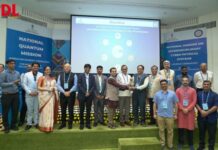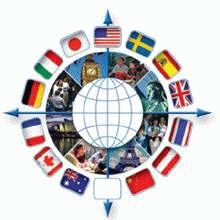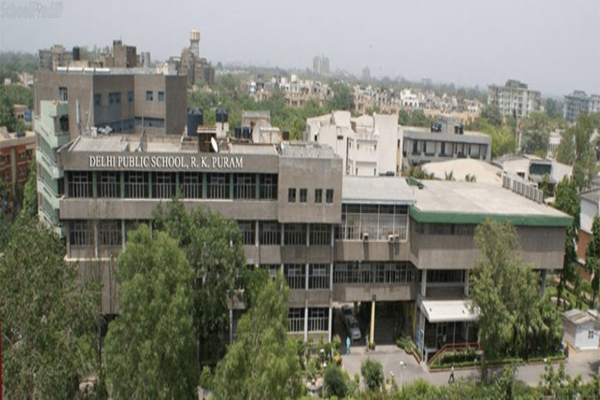In a country where teachers are in short supply and decent textbooks are hard to find, Indian schools are pinning their hopes on a free online tutorial service based in the United States.
A few Indian schools are already using Khan Academy, which offers lessons on numerous subjects through online videos, to cement math and science fundamentals, cut student absenteeism, boost test scores and in some cases, to simply survive. But these one-time school initiatives could gain traction from an effort to dub 450 of the 3,400 English-language Khan Academy videos in at least three Indian languages, as well as other efforts to make them more accessible to Indian students.
In addition, Khan Academy is in early talks with India’s Ministry of Human Resource Development to match schools’ syllabi with the relevant Web tutorials.
“What our teachers have is merely textbooks, and there is a dire need of solid teaching and learning resources,” said Giridhar Subramanian of Azim Premji Foundation, a nonprofit organization in Bangalore that focuses on education. The foundation has already dubbed 38 Khan Academy videos in Hindi, Tamil and Kannada, with plans to complete 120 by March and 450 by 2014.
The foundation is making the dubbed videos available through an affiliated Web site, TeachersofIndia.org and through its field institutes that work with rural schools.
“When good instructional material is easily available, why should we reinvent?” he said.
Khan Academy was started in 2008 by Salman Khan, an alumnus of Harvard Business School and the Massachusetts Institute of Technology, following the growing popularity of video tutorials he did for his cousins. In 2010, Khan Academy received a $2 million grant from Google and $1.5 million from the Bill and Melinda Gates Foundation.
As of August, three to four percent of the site’s six million monthly users were from India, making it the third-largest traffic generator, behind Canada and the United States, Sundar Subbarayan, leader of Khan Academy’s school partnerships, said in an interview via Skype and in an e-mail. He also said he was aware of 10 schools in India that are using Khan Academy videos.
Some of those Indian users came from the computer lab at Sree Karpagavalli Vidhyalaya Middle School, a troubled private school in central Chennai that receives government funds for the first- to fifth-grade classes. The nonprofit Altius Foundation in Chennai pays for the teachers in the sixth to eighth grades. Most of the school’s students come from one of the dozen neighborhood slums, and vast majority of their parents have never had a school education.
During a recent visit to a second-floor classroom, 11 girls and 5 boys, dressed in checked beige shirts and brown pants, were seated with their headsets, watching their choice of math-based Khan Academy videos that were subtitled in Tamil by the foundation. If the students, who are 10 to 12 years old, don’t understand something, they can seek clarification from one of the two supervisors in the lab, which has 16 Web-enabled computers.
“The system is goal-based and so kids are able to work at their pace,” said Srikanth Chandrasekaran, a stock trader and a philanthropist who runs the Altius Foundation. He donated 500,000 rupees ($9,400) to set up the computer lab in June 2011 at the middle school.
Over the past decade, 20 of the 28 rooms in the school have gradually gathered dust as the student population at Sree Karpagavalli dwindled to 225, one third of the 720 students who attended in 2000. An increasing number of shanty dwellers choose to send their kids to private English-language schools, which are seen as a ticket out of poverty and into India’s job market.
“The school was actually dying because the medium of instruction was Tamil and they were also not getting good teachers,” said Mr. Chandrasekaran.
Now sixth-graders craft their weekly math lesson plans using the Khan Academy videos. Because the math teacher quit at the end of the last academic year in April, these videos are now the primary form of math instruction in the school, which has just 12 teachers, half the number it had 10 years ago.
“Many of the sixth-grade children didn’t even know to add or subtract, but now math scores have improved,” said Gopalan Ganesan, a retired businessman who volunteered to be the school’s treasurer four years ago. Nearly one-third of the class has scored above 80 percent in recent sixth-grade tests, and fewer than 10 percent of the students have failed, which is a marked improvement from before, said Mr. Ganesan.
Just four miles away, the American India Foundation, backed by Indian diaspora in the United States, has also started using Khan Academy videos to support math and science study at the Jaigopal Garodia Government Girls Higher Secondary School in northwest Chennai.
It is a much larger school than Sree Karpagavalli, offering courses in both English and Tamil to 1,000 girls, who are largely from poor families. In July, after a visit by Khan Academy’s Mr. Subbarayan, the American India Foundation started a pilot program to tutor children using Khan Academy videos in the school’s lab, which has 25 laptops donated from the American computer maker Dell.
“We are working with first-generation learners, and if they are unable to read or write, it shrinks their interest in the subject, leading to absenteeism,” said Baskaran Dheenadayalan, a program manager for the foundation who is based in Chennai.
Just two months after the video tutoring program started, the attendance rate of sixth- to 10th-grade students, who have access to Khan Academy videos in the lab, has risen to 92 percent in August from just 63 percent in June, Mr. Dheenadayalan said.
Even schools with more affluent student populations are supplementing their lessons with videos from the Khan Academy. R.N. Podar School in Mumbai found it difficult to accommodate computer lab slots for all its students. Instead, the school has started assigning course-specific video tutorials as homework to its 2,700 students, who come from middle-class families with Internet access at home.
“Now the teacher’s time is spent not in preparing lectures but in understanding the class and designing classroom interaction with differentiated instructions where peer learning happens,” said Avnita Bir, R.N. Podar School’s principal, in a telephone interview.
One of Mrs. Bir’s concerns has been high levels of teacher attrition, sometimes even during a school year, and she finds the free online tutorials a much-needed backup to cope with teacher shortages.
Mr. Subbarayan confirmed that Khan Academy had a “brief conversation” with the Indian government to map the Central Board of Secondary Education syllabi to Khan Academy videos and that the nonprofit plans to set up an India office by June next year.
The biggest obstacles to implementing the Web tutorials more widely in India are spotty Internet connectivity, lack of funds to purchase computers and patchy student comprehension of the American-accented English in the videos, although one nonprofit, the Central Square Foundation, is dubbing Khan Academy videos into Indian-accented English.
But Mr. Subbarayan was optimistic that Khan Academy could help India’s education system.
“The price of technology is falling and India can skip generations in education, but you need the right mindset,” he said. “Education is a right, and everybody has a right for good-quality education.”
Source: The New York Times












 harti Mittal among many other reputed businessmen have shown interest in partnering with the government to set up schools across the country.
harti Mittal among many other reputed businessmen have shown interest in partnering with the government to set up schools across the country.
 ‘Leadership skills for top management’ (LSTM) is the first among the planned series of programmes aimed at the business leaders in Pakistan. It has been specially designed to help CEOs, business heads and government officials to hone their leadership skills and drive growth through exceptional performance in a challenging and ever-evolving global market. LSTM is among ISB’s most successful executive education programmes in India, having been delivered to more than 1,000 senior leaders in the last 11 years, a press statement stated.
‘Leadership skills for top management’ (LSTM) is the first among the planned series of programmes aimed at the business leaders in Pakistan. It has been specially designed to help CEOs, business heads and government officials to hone their leadership skills and drive growth through exceptional performance in a challenging and ever-evolving global market. LSTM is among ISB’s most successful executive education programmes in India, having been delivered to more than 1,000 senior leaders in the last 11 years, a press statement stated. 
 As per the new sports policy, it is mandatory for schools to have five sports periods in a week. State minister of sports Padmakar Valvi said, “Besides training on the ground, it is important for students to get comprehensive knowledge about sports. If this knowledge is imparted at school level, we will have sportspersons who will have their fundamentals clear from a young age.
As per the new sports policy, it is mandatory for schools to have five sports periods in a week. State minister of sports Padmakar Valvi said, “Besides training on the ground, it is important for students to get comprehensive knowledge about sports. If this knowledge is imparted at school level, we will have sportspersons who will have their fundamentals clear from a young age. 
















